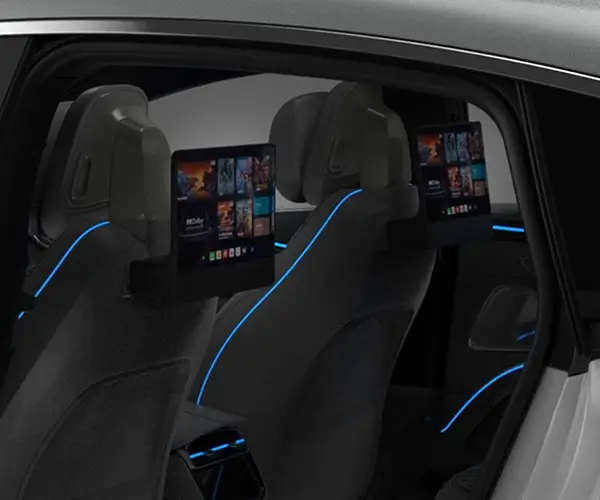Unlocking Precision: Exploring the Power and Potential of 270-Degree Servo Motors
In the fast-paced world of robotics and automation, precise movement control isn’t just a luxury—it’s a necessity. Imagine a tiny marvel of engineering, capable of turning, tilting, or positioning with pinpoint accuracy across a wide arc. That marvel is often a servo motor, and more specifically, a 270-degree servo motor is commanding attention for its exceptional versatility and performance.

Most of us are familiar with small hobby servos used in radio-controlled vehicles or simple robotic arms, which typically rotate about 180 degrees, offering a half-circle of motion. But what if we need a bit more? A wider range of movement that allows for greater flexibility without sacrificing speed or torque? Enter the 270-degree servo motor—a device capable of rotating up to three-quarters of a circle, providing a perfect compromise between full 360-degree rotation servos and limited 180-degree variants.
Understanding the Basics: What is a 270-Degree Servo Motor?
At its core, a servo motor is an electro-mechanical device that converts electrical signals into precise mechanical movement. Typically, they’re controlled through PWM (Pulse Width Modulation) signals, and their rotational range differs based on design specifications. A 270-degree servo motor delivers an angular movement of approximately 270 degrees—almost three-quarters of a circle—which grants engineers and hobbyists a broader operational envelope.
This extended rotation range makes it ideal for applications where limited rotation could restrict functionality but full rotation isn’t necessary. For example, in robotic arm joints, camera gimbals, or intricate automation systems, a 270-degree servo can provide enough movement to perform complex tasks with high precision.
Design & Structure: What Sets a 270-Degree Servo Apart?
The engineering behind a 270-degree servo is a sophisticated balance of gear ratios, motor power, and control circuitry. Unlike continuous rotation servos (which can spin endlessly), a standard 270-degree motor typically features:
High-torque motor: Ensures smooth, rapid movement capable of handling load. Gear train: A series of gears that reduce speed but increase torque, enabling greater positional accuracy within the limited range. Potentiometer or Hall sensors: For position feedback, vital for precise control. Control circuitry: Converts PWM signals into physical movement, compensating for load variations and environmental factors.
These elements work together to deliver consistent, reliable performance—whether in a compact size for embedded systems or larger formats for industrial machinery.
Advantages of Using a 270-Degree Servo Motor
Why choose a 270-degree servo over other options? It’s all about balancing movement range, control, and simplicity.
Enhanced Flexibility: Compared to standard 180-degree servos, the additional 90 degrees open new possibilities for more natural and fluid motion. This is particularly beneficial in applications like animatronics, where expressive gestures matter.
Improved Precision & Stability: With built-in feedback mechanisms, a 270-degree servo offers tailored control, enabling fine adjustments to position, crucial in robotics or camera stabilization.
Compact & Cost-Effective: These servos often come in small packages, making integration into tight spaces easier, without breaking the bank.
Energy Efficiency: Designed to operate efficiently within their rotation limits, these servo motors conserve power during operation—important for battery-powered projects.
Ease of Control & Integration: Compatible with standard PWM controllers, they can be integrated into existing automation setups without extensive reprogramming or hardware overhaul.
Applications That Shine with a 270-Degree Servo
From the hobbyist’s desk to the industrial workshop, 270-degree servo motors are revolutionizing many fields. Here’s a look at some of their most prominent applications:
Robotics: Joints and limbs that need wider articulation than 180 degrees but don’t require full rotation. Think of robotic arms assembling delicate components or humanoid robots mimicking natural movements.
Camera Gimbals & Stabilizers: For smooth panoramas and steady shots, these servos allow precise, quick repositioning of cameras, especially when combined in multi-axis systems.
Animatronics & Props: Bringing characters and props to life with lifelike, nuanced movements, the wider rotation offers enhanced expressiveness.
Automation and Manufacturing: Precise positioning of components or tools in assembly lines, especially where space constraints limit the size and range of motion.
Educational Projects & DIY Creations: An accessible way for engineering students and hobbyists to explore complex motion control without breaking the bank or overcomplicating their setups.
Beyond the Standard: Custom & High-Performance Variants
The market’s growing demand for specialized applications has spurred innovation in 270-degree servo technology. Manufacturers now offer variants with:
Higher torque ratings: For heavy loads or more robust applications Enhanced durability: Designed to operate under extreme conditions Integrated feedback systems: For even finer control and monitoring Waterproof and weather-resistant versions: For outdoor or marine applications
The trend is clear: as technology advances, so does the potential of 270-degree servo motors to adapt to increasingly demanding tasks.
Key Factors to Consider When Choosing a 270-Degree Servo
Not all servo motors are created equal. When selecting a 270-degree servo for your project, ask yourself:
Torque requirements: Will the servo support the weight or force needed? Speed of operation: How fast should it move from one position to another? Power supply compatibility: Is your power source adequate? Size and mounting: Will the servo physically fit into your design? Feedback and control precision: Do you need high-resolution positional feedback? Environmental resilience: Will it operate under dust, moisture, or temperature extremes?
Matching these considerations to your specific application ensures optimal performance and longevity.
Kpower has delivered professional drive system solutions to over 500 enterprise clients globally with products covering various fields such as Smart Home Systems, Automatic Electronics, Robotics, Precision Agriculture, Drones, and Industrial Automation.




































